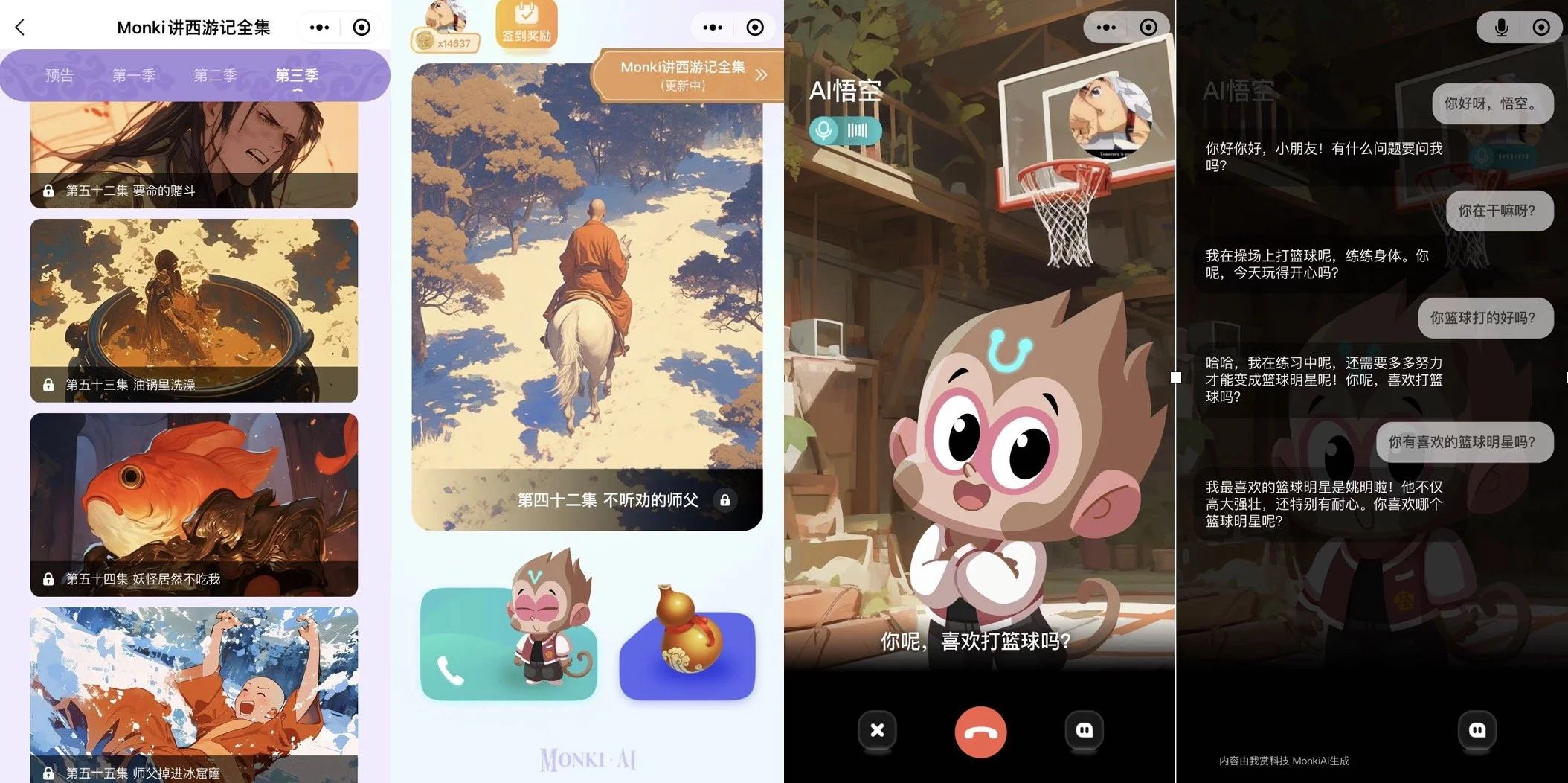Navigating the Landscape of Generative AI in Education: Lessons from Monki.ai
As we delve deeper into the integration of Generative AI (GAI) in education, the conversation becomes increasingly nuanced. We started project Monki at the end of 2022, and after nearly a year of operation there are lots of updates and feedbacks that came beyond our imagination;
Sarah Levine’s recent paper, The Next Word: A Framework for Imagining the Benefits and Harms of Generative AI as a Resource for Learning to Write, provides a compelling framework for understanding the implications of GAI in writing education. We are drawn to some of the findings in the paper and found out that they are closely aligned with our work with Monki, an immersive interactive reading tool that leverages AI to enhance children's engagement with literature.
Monki.ai: A Case Study in Interactive Learning
Monki.ai represents a pioneering step in combining AI with classical literature, creating an interactive storytelling experience that invites children to ask questions and reflect on their learning. Similar to the “Writers-in-Community” model outlined by Levine, our project situates writing and learning within a broader social context, allowing children to explore language and narratives actively.
Monki embodies the personality and wisdom of the Monkey King, creating a personalized learning environment that enhances emotional engagement and comprehension. By positioning Monki as a collaborative partner, we aim to mitigate the risks identified by Levine—such as students becoming overly reliant on AI for creativity—by ensuring that children are still the authors of their stories, guided by Monki’s insights.
The Dual Nature of GAI
Prof Levine's paper draws on Octavia Butler's notion that any change may yield both benefits and harms. This duality is crucial as we navigate the integration of GAI in educational contexts. While Professor Levine emphasizes the importance of centering human writers in the collaborative process with GAI, which is essential for fostering critical thinking and agency among students, we also confront the same challenge in our Monki.ai project, where the AI agent, Monki, serves not merely as a tool but as a companion that encourages children to engage actively with the narrative of Journey to the West. We see a growing needs for collaborative learning pattern to be fostered within schools, families and classes, apart from GAI itself. For example, leveraging JME(Joint Media Engagement) method to involve not only children but also parents and teachers in the system.
Insights from Monki
As we analyze user interactions, we observe that children aged 5 to 8 exhibit the most meaningful engagement under current settings. Our ongoing efforts to stratify user experiences by age and background will help us refine Monki’s interaction style, ensuring it resonates effectively with all users.
The Future of Educational AI
We aspire to create a model that not only enhances literacy but also fosters critical thinking, creativity, and emotional intelligence. By focusing on collaborative learning and the integration of innovative pedagogical methods, we can harness the power of GAI while safeguarding against its potential pitfalls.
